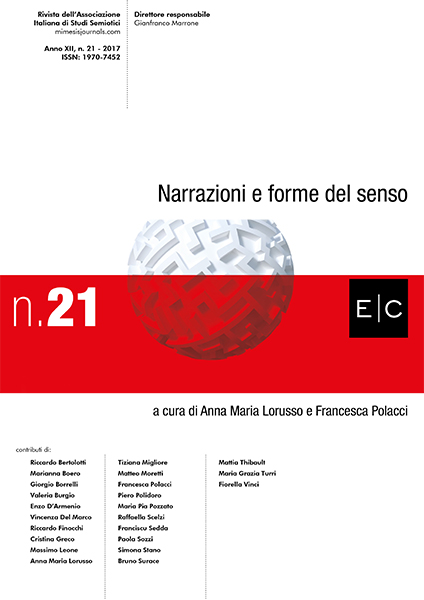Telling 18 Trillion Stars. Play Narratives and Procedural Generation
Abstract
This article provides a brief overview on the relationships between narrativity and play. The topic has been much debated within the game studies community in the early 2000s, often on the basis of rather extreme positions. From a semiotic perspective, a greimasian analysis of the narrative structure of play is not self-evident, as there is the risk of describing the narrative features of the practice of playing (the act of enunciating) or, on the contrary, to focus exclusively in the narrative that may be told by a game (the enunciate). We try, instead, to focus on the ludic enunciation, by constructing an actantial model around a subject which is compound in its modalities – provided both by the player and by the rules. This entails that games often face moments of semiotic explosion, that make their enunciation becoming labyrinthine. These explosions are not only due to the players choice, but also to the use of “explosive” devices, such as dice and random number generators, that can be used to determine a part of the performance, but also to create texts that will be used to play, as in the case of procedural generation.



